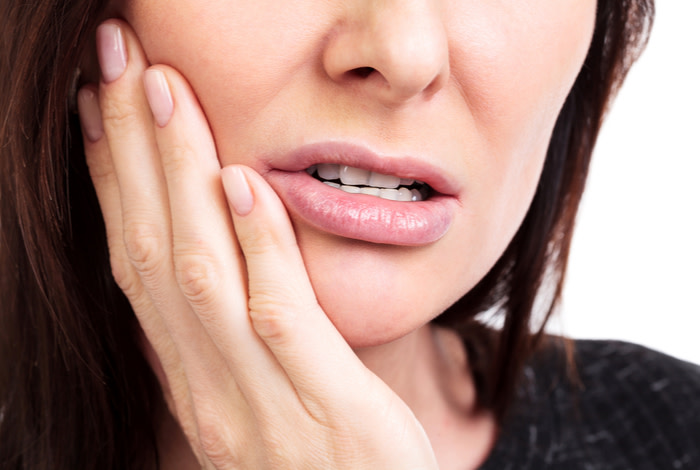
Do your gums bleed when you brush? Do they look puffy or feel tender? They shouldn’t. If they do, you might have gum disease. If neglected or left untreated for too long, gum disease can result in serious and permanent damage to your overall oral health. But more than that, it may also have a detrimental impact on your quality of life, causing pain, discomfort and embarrassment. So, don’t ignore the symptoms.
General signs of unhealthy gums
Identifying and treating gum disease early is key to protecting one’s teeth and gums. There are several obvious signs that your gums may not be as healthy as they could be. These typically include:
- Inflammation of gums
- Redness and swelling
- Some bleeding, particularly when brushing and flossing
- Bad breath and a bad taste in your mouth
- Gums feeling soft or spongy
- Receding gums
- Loose teeth
- Visible pus around the teeth and gums
- A noticeable change in the way your teeth come together
Causes of gum disease
Poor gum health doesn’t only affect your gums – the bone and tissues supporting your teeth are in danger too. While there are a number of reasons people experience these issues, the main cause of gum disease is plaque build-up.
Plaque is a sticky colourless biofilm of bacteria that occurs on the teeth and gums. If you don’t brush your teeth regularly – that means morning and night – the plaque builds up and eventually damages your gum tissue, teeth and the bones that support your teeth. The longer it remains, the more it adversely affects your gums. If left for too long, it may even harden and calcify, becoming what’s called calculus or tartar, which worsens the state of unhealthy gums.
Types of gum disease
There are two main kinds of gum diseases: gingivitis and periodontitis .
It should be noted that untreated gingivitis can lead to periodontitis, the advanced stages of which can lead to tooth loss, and has been linked with heart disease other health problems. If you have concerns about your dental health or want to find out more, book an appointment with a local dentist .
Gingivitis
Though this condition should not be ignored, gingivitis is the mildest form of gum disease. It causes the gums to become red, swollen, and easily bleed. It can also cause bad breath. Typically, at this stage there’s little to no discomfort. And because this is an early stage gum disease, gingivitis is reversible with professional treatment and good oral care at home – leaving no permanent damage. One of the simplest and most effective methods of keeping gingivitis at bay is regular flossing.
Periodontitis
As already mentioned, untreated gingivitis can advance to periodontitis, where, over time, plaque spreads and grows below the gum line, creating toxins that cause chronic inflammation. This leads to the gums separating from the teeth, forming pockets between them that become infected. As the disease advances, the pockets deepen – destroying gum tissue and bone. Deceptively, this destructive process has very mild symptoms. But eventually, teeth can become loose and may fall out or have to be removed.
There are many forms of periodontitis. These include:
- Chronic periodontitis – this is the most frequent form of periodontitis and is characterised by inflammation within the supporting tissues of the teeth, which leads to loss of bone and tooth attachment. It’s most prevalent in adults, but it can occur at any age.
- Periodontitis caused from systemic diseases – this often manifests at an early age. Systemic conditions such as heart disease, respiratory disease and diabetes are associated with this form of periodontitis.
- Necrotising periodontal disease – this term describes a group of relatively rare mouth infections, where ulceration and the death of gum tissue is common. This ulceration can be seen in individuals with systemic conditions such malnutrition, immunosuppression and HIV infections.
- Aggressive periodontitis – this can occur in patients who are otherwise clinically healthy. Common features include rapid loss of tooth attachment and bone destruction.
Caring for your teeth and gums
The devastating effects of gum disease can be pretty scary, but the truth is caring for your gums and avoiding gum problems is relatively easy. And it all starts in front of your bathroom sink.
Here are a few helpful tips:
- Brush your teeth after meals – this helps to clear food and plaque trapped between your teeth and gums. Remember to brush your tongue too – bacteria gathers there as well.
- Floss at least once a day – this can help to remove any lingering food particles and plaque from between teeth and along the gum line that your toothbrush doesn’t reach.
- Use mouthwash – this will help reduce plaque and rinse away food that brushing and flossing might miss.
- Know the factors that put you at higher risk – for example, age, smoking, diet and genetics can all increase your chances of gum disease.
- See your dental professional regularly – regular check-ups every six months are vital to oral health. They’ll assess your teeth, gums, plaque level, bone structure, bite and other factors concerning gum health.
- Use a soft-bristled toothbrush – If you have any issues, gentle brushing massages gums and can help with the healing process.
Finding a dental professional
If you have concerns about gum disease or want to book your next dental check-up, visit MyHealth1st to quickly and easily find and book your closest dentist .
If you need to search for and book healthcare appointments online, the fastest and easiest way is at myhealth1st.com.au